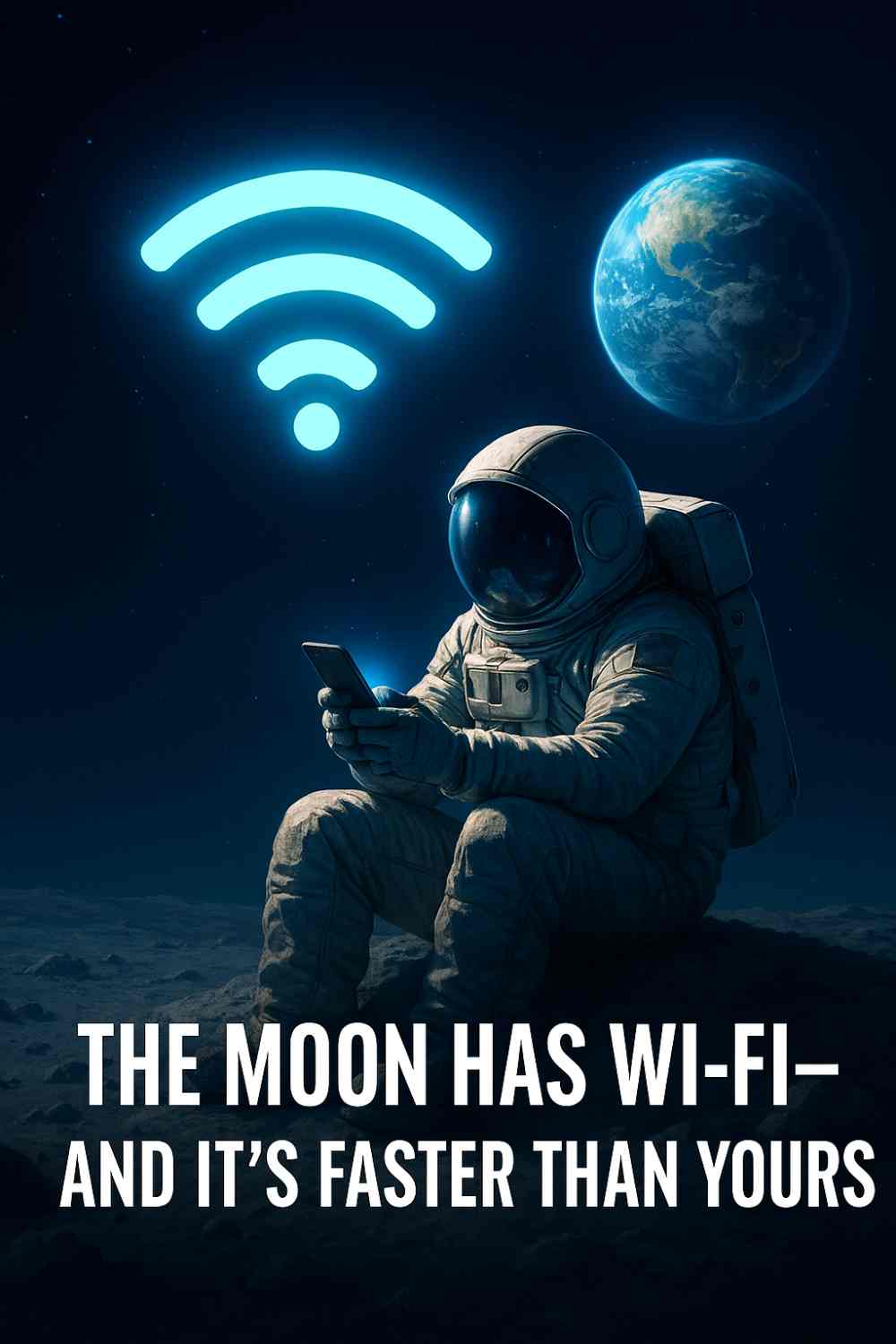 Imagine this: you’re sitting on your couch, phone in hand, scrolling through memes while connected to Wi-Fi. Now picture someone—or something—doing the exact same thing… but on the Moon. Sounds like sci-fi? It’s not. The Moon has had Wi-Fi since 2014. No, an astronaut isn’t binge-watching Netflix up there (yet), but the fact that we’ve extended our internet bubble 238,900 miles into space is downright wild.
Imagine this: you’re sitting on your couch, phone in hand, scrolling through memes while connected to Wi-Fi. Now picture someone—or something—doing the exact same thing… but on the Moon. Sounds like sci-fi? It’s not. The Moon has had Wi-Fi since 2014. No, an astronaut isn’t binge-watching Netflix up there (yet), but the fact that we’ve extended our internet bubble 238,900 miles into space is downright wild.
How the Moon Got Wi-Fi (And Why It’s Not for TikTok)
Let’s get one thing straight—this isn’t some cosmic Starbucks hotspot. NASA and MIT teamed up to bounce a laser-based signal from Earth to a lunar orbiter, creating what’s essentially a space-age internet connection. The tech behind it? Lunar Laser Communication Demonstration (LLCD). No routers, no passwords—just photons screaming through the void at the speed of light.
Why? Because radio signals, the old-school way we communicate with spacecraft, are slow. Painfully slow. Sending high-res images or streaming data via radio waves is like mailing a DVD instead of clicking “download.” Lasers? They’re the fiber optics of space. And if we’re serious about moon bases, Mars missions, or deep-space exploration, snail-mail comms won’t cut it.
Forget Buffering—This Is Light-Speed Lag
Ever yelled at a video call for freezing? Try doing it from the Moon. Even with lasers, the delay is real. At best, a signal takes 1.28 seconds to go Earth-Moon and back. That’s 2.56 seconds just to hear, “Can you hear me now?” Laggy? Sure. But compare that to the Mars rovers, where a simple “hello” could take anywhere from 5 to 20 minutes to arrive. Suddenly, lunar Wi-Fi feels like broadband.
The real kicker? This isn’t just about speed. Lasers can carry way more data than radio. LLCD once hit download speeds of 622 Mbps—faster than most home connections. Imagine streaming 4K footage of a moonwalk… literally.
The Moon’s Wi-Fi Password? “No Atmosphere.”
Here’s the catch: space is a terrible place for signals. No air means no interference, but it also means no room for error. Lasers are precise—think threading a needle from New York to Paris. Clouds? A death sentence for the signal. That’s why NASA uses ground stations in clear-skied spots like New Mexico and the Canary Islands. Miss the shot, and your data ends up lost in the void.
And let’s not forget space junk. Even a speck of dust or a wandering satellite could scramble the signal. It’s like trying to FaceTime during a hurricane while someone keeps shaking your phone.
So… Can I Use It? (Spoiler: No, But Here’s What’s Coming)
Unless you’ve got a lunar lander and a death wish, this Wi-Fi isn’t for public use—yet. But the implications? Massive. Future astronauts could video-call home, download research in seconds, or even control robots on the surface from orbit. And with Artemis aiming for a moon base by 2030, reliable internet isn’t a luxury; it’s a necessity.
Think bigger: this tech could bridge communication gaps across the solar system. Mars colonists Zooming Earth? Europa’s ocean drones sending real-time footage? It’s all on the table.
Why This Matters More Than You Think
We take Wi-Fi for granted. It’s invisible, everywhere, and usually annoying when it drops. But extending it beyond Earth rewires how we think about exploration. Data is the lifeblood of science—the faster we can move it, the quicker we learn.
And hey, there’s something poetic about it. Humans: the species that turned “Can you hear me?” into “Can you hear me… from another celestial body?” We’ve literally made the Moon part of our network. If that doesn’t make you pause, what will?
Final Thought: The Moon’s Just the Start
Next time you complain about your Wi-Fi, remember: someone, somewhere, is troubleshooting a laser link between planets. Our internet is growing up—and out. 🌕📡
Curious how far your knowledge travels? Try today’s Bing Homepage Quiz and explore more mind-bending facts!

